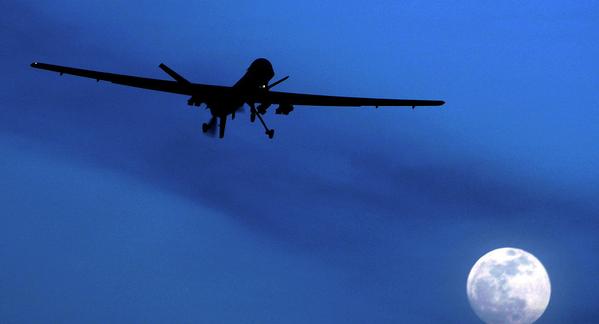It is official especially when Tehran sent empty planes to Riyadh to pick up Iranian personnel. Saudi has the endorsement of several Gulf States while John Kerry of the U.S. State Department is begging for calm and for relations to be restored. Sigh…
Saudi Arabia severs ties with Iran: foreign minister
Riyadh (AFP) – Foreign Minister Adel al-Jubeir announced Sunday that Saudi Arabia was severing diplomatic ties with Iran after demonstrators stormed its Tehran embassy to protest against Riyadh’s execution of a Shiite cleric.
Jubeir also said that all Iranian diplomats must leave Saudi Arabia within 48 hours.
Trend: Saudi Arabia in response to protests in front of Saudi Embassy in Tehran decided to terminate the diplomatic relations with Iran, Haber 7 reported.
Saudi Arabia gave Iranian ambassador 24 hours to leave the country.
Iranian protesters against the execution of a Shiite leader by Saudi Arabia raided and set fire to the Saudi Embassy in Tehran late Saturday.
The move came hours after the Saudi Interior Ministry announced that prominent Shiite leader Nimr al-Nimr and 46 other men were executed on terror charges.
Meanwhile, Tehran has issued a formal declaration against Saudi Arabia.
DailyMail: Iran’s Supreme Leader has vowed ‘divined revenge’ on Saudi Arabia after it executed 47 prisoners, including a prominent Shiite cleric, yesterday.
Its elite paramilitary unit, the Revolutionary Guard, compared the Sunni-ruled country to terror group ISIS and warned the ‘medieval act of savagery’ would lead to the monarchy’s downfall.
A controversial meme posted on an Iranian website, thought to belong to Supreme Leader Ayatollah Ali Khameni, suggested the only difference between Saudi rulers and ISIS executioners was the clothes they wore.
Saudi Arabia claimed Shiite cleric Sheikh Nimr al-Nimr and the other executed prisoners, which include three other Shiite dissidents and a number of al-Qaeda supporters, were all convicted ‘terrorists’. It said Iran had ‘revealed its true face as a supporter of terrorists’ by condemning al-Nimr’s death.
The escalating war of words came after a night of violence in the Iranian capital of Tehran, where a furious mob petrol bombed the Saudi embassy to protest al-Nimr’s killing. At least 40 were arrested on suspicion of attacking and setting fire to the embassy.
Iraq’s former Prime Minister Nouri Al-Maliki warned the executions would ‘topple the Saudi regime’, US and European said they risked ‘exacerbating sectarian tensions’, and UN Secretary-General Ban Ki-moon said he was ‘deeply dismayed’.
Al-Nimr, the most vocal critic of the Saudi dynasty, was the driving force behind the protests which broke out in the east of the country in 2011, where the Shiite minority claims they are fiercely persecuted.
Khamenei condemned Saudi Arabia for the second straight day over his execution, saying: ‘The unjustly spilled blood of this oppressed martyr [al-Nimr] will no doubt soon show its effect and divine vengeance will befall Saudi politicians.’
The Revolutionary Guard yesterday promised ‘harsh revenge’ against Saudi Arabia’s royal dynasty, but its foreign ministry called for calm after protesters tried to burn down its embassy in Tehran.
None of the Saudi embassy staff were inside the building when demonstrators broke in and trashed the offices. They forced their way inside where they ransacked rooms, destroyed furniture and started fires before they were ejected by police.
Tehran’s police chief said an unspecified number of ‘unruly elements’ were arrested for attacking the embassy with petrol bombs and rocks overnight.
Iranian President Hassan Rouhani, who condemned al-Nimr’s execution, said the attacks on the embassy were ‘unjustifiable’.
He ordered his Interior Ministry to arrest the attackers, who he described as ‘extremists’, and punish them for ‘such ugly acts’.
There have been reports of other revenge attacks against Saudi Arabia across the Middle East.
Footage from Iraq claimed to show Saudi Arabia’s newly reopened embassy in Baghdad engulfed in smoke after a rocket was reported to have been fired at it.
Helicopters circled high above the embassy in central Baghdad, which was targeted after the news of al-Nimr’s execution spread to Iraq, Russia Today reported.
Unconfirmed reports have claimed the rocket, which struck just metres away from the embassy, was fired by Iraqi Shiite militia group Harakat al-Nujaba.
The Saudi embassy reopened its doors on Friday after being closed for 25 – following the Iraqi invasion of Kuwait – to help strengthen an alliance against ISIS.
Violent demonstrations have also erupted across the Middle Eastern and Gulf countries, including Lebanon, Pakistan and Bahrain, while Muslims in the West have held peaceful marches. Much more detail here along with photos.


![[Photo via Wikipedia]](https://cdn.inquisitr.com/wp-content/uploads/2016/01/Umayyad-Mosque-Panoramic-670x177.jpg)





